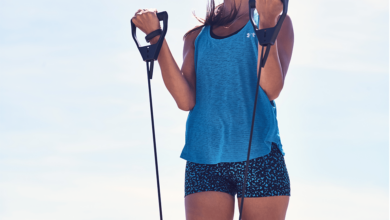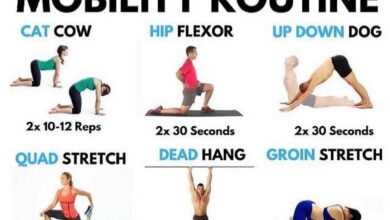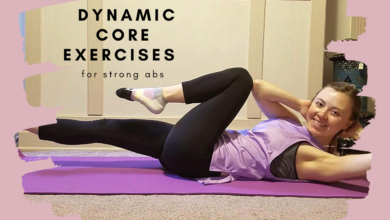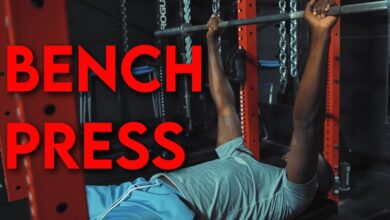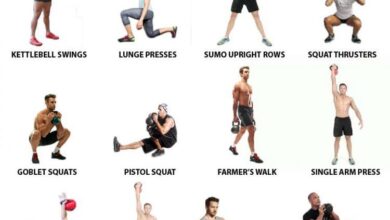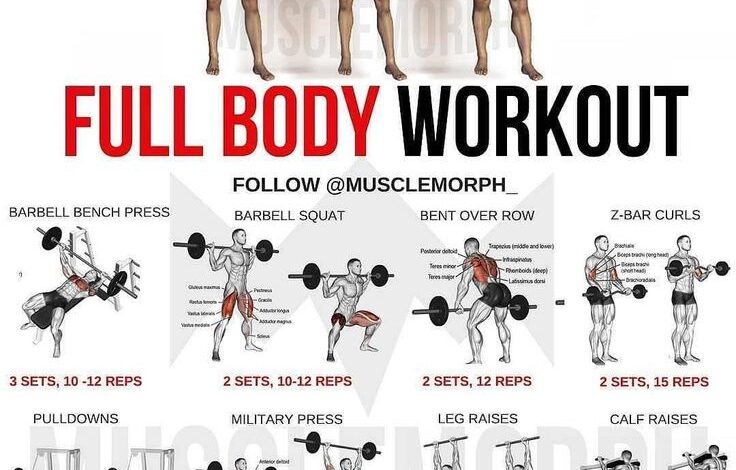
5 Total Body Exercises for More Results in Less Time
5 Total body exercises for more results in less time – it’s a promise that sounds too good to be true, right? But what if I told you that with just a few targeted movements, you could sculpt your entire physique, boost your energy, and see incredible results in a fraction of the time?
This is the power of total body workouts, and in this post, we’re diving into five of the most effective exercises that can transform your fitness journey.
Imagine a workout routine that tackles every muscle group in a single session, leaving you feeling energized and accomplished. This is the beauty of total body exercises – they offer a comprehensive approach to fitness, maximizing your results while minimizing your time commitment.
Whether you’re a seasoned athlete or just starting your fitness journey, these exercises can be adapted to your individual needs and goals, making them accessible to everyone.
Push-Ups
Push-ups are a classic bodyweight exercise that targets multiple muscle groups simultaneously, making them a highly efficient exercise for building upper body strength and core stability.
Push-Up Technique
Proper form is crucial for maximizing the benefits of push-ups and preventing injuries.
Start with your hands shoulder-width apart, fingers pointing forward.
Your body should form a straight line from your head to your heels.
Lower your chest towards the ground, keeping your core engaged and back straight.
Push back up to the starting position, extending your arms fully.
Push-Up Benefits
Push-ups are a compound exercise that engages numerous muscle groups, making them an effective exercise for overall fitness.
They primarily target the chest, shoulders, and triceps, but also engage the core muscles, including the abs and obliques.
Push-ups are a great way to build upper body strength and endurance, and they can be modified to suit different fitness levels.
Push-Up Modifications
Push-ups can be modified to suit different fitness levels and abilities.
Beginner:Wall push-ups
This variation involves performing a push-up against a wall, reducing the difficulty and making it easier to maintain proper form.
Intermediate:Knee push-ups
Want to maximize your workout time and see faster results? Five total body exercises can help you achieve that, but remember, your body’s hormonal response plays a crucial role in weight loss. Check out this article on 3 Hormones to Keep in Mind for Weight Loss to understand how to optimize your body’s natural fat-burning processes.
Once you’ve got the hormonal side figured out, you’ll be ready to tackle those five total body exercises with even more confidence and see even better results!
By performing push-ups with your knees on the ground, you reduce the amount of weight you’re lifting, making the exercise less challenging.
Advanced:Decline push-ups
By elevating your feet on a bench or platform, you increase the resistance, making the exercise more challenging.
Exercise 3: Lunges
Lunges are a versatile compound exercise that targets multiple muscle groups in your lower body, making them an excellent choice for building strength, improving balance, and enhancing flexibility. They are a great way to challenge your legs and glutes, helping you achieve a more sculpted physique.
Proper Execution
Proper form is crucial to maximize the benefits of lunges and prevent injuries. Here’s a step-by-step guide to performing a lunge correctly:
1. Starting Position Stand with your feet hip-width apart, keeping your core engaged. Take a large step forward with one leg, bending your knee and lowering your body until your front knee is bent at a 90-degree angle and your back knee is almost touching the ground.
Ensure that your front knee stays aligned with your toes, preventing it from going past your toes.
2. Leg Alignment
Want to maximize your workout time and see real results? Five total body exercises can do just that! But remember, it’s not just about the exercises; making small, sustainable changes to your lifestyle can have a huge impact on your weight loss journey.
Check out these 10 Simple Changes That Lead to Weight Loss for inspiration! Once you’ve got those habits in place, you’ll be ready to crush those five total body exercises and take your fitness to the next level!
3. Core Stability Keeping your core engaged throughout the exercise helps stabilize your body and prevent strain on your back. Imagine you’re drawing your belly button towards your spine, and maintain this engagement throughout the movement.
4. Push Back Push off with your front foot to return to the starting position, bringing your back leg forward. Repeat on the other side.
Benefits of Lunges, 5 total body exercises for more results in less time
Lunges offer a variety of benefits, including:* Increased Lower Body Strength:Lunges effectively target your quadriceps, hamstrings, glutes, and calves, promoting muscle growth and overall strength.
Improved Balance and Stability Lunges require you to maintain a stable base, which strengthens your core and improves your overall balance and coordination.
Enhanced Flexibility Lunges help improve the range of motion in your hips and ankles, contributing to greater flexibility in your lower body.
Types of Lunges
There are various types of lunges, each with its unique advantages:
| Type | Advantages |
|---|---|
| Forward Lunges | A classic lunge variation that effectively targets the quads, hamstrings, and glutes. |
| Reverse Lunges | This variation places less stress on the knees and is a good option for beginners. |
| Walking Lunges | A dynamic exercise that increases your heart rate and challenges your balance. |
| Lateral Lunges | This variation focuses on the inner and outer thighs, improving hip mobility and stability. |
Exercise 4: Plank
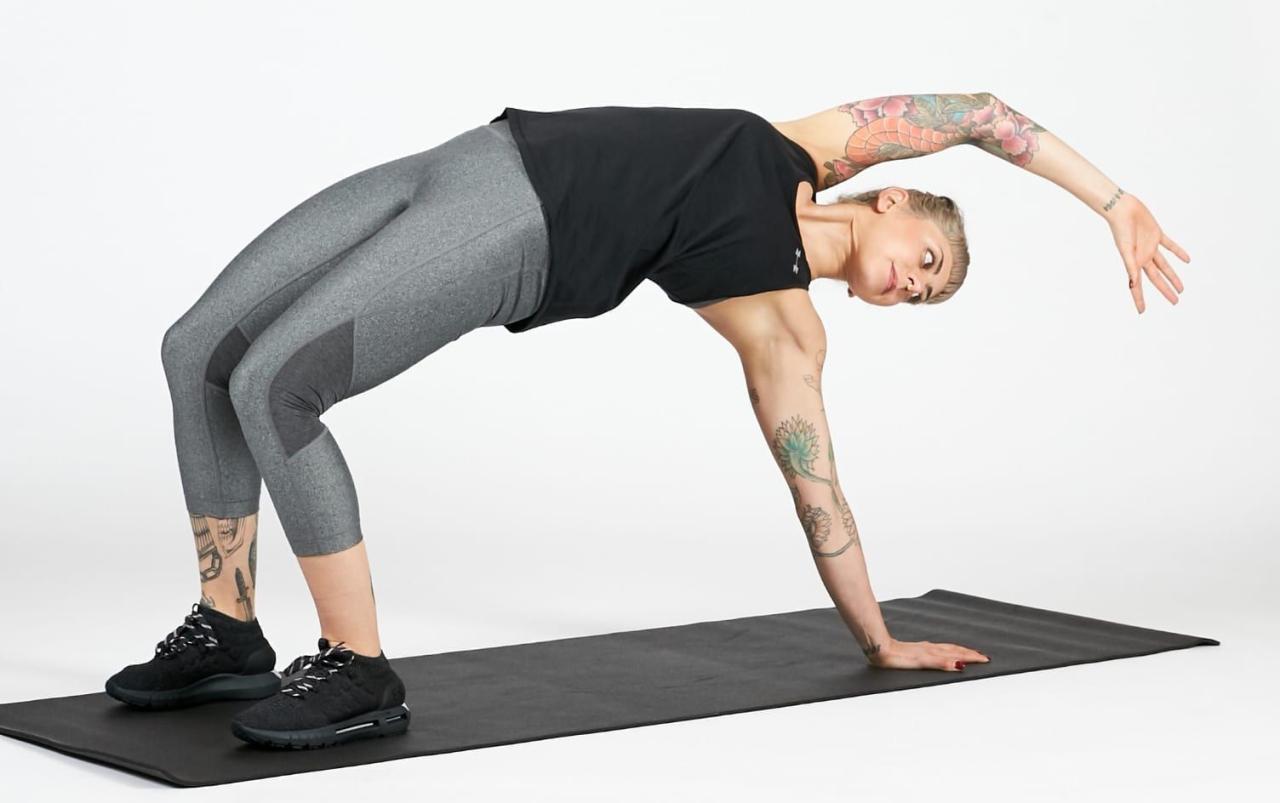
The plank is a static exercise that strengthens your core muscles, including your abs, obliques, and lower back. It also improves your posture and stability. To perform a plank, you need to hold a position similar to a push-up, but with your forearms on the ground instead of your hands.
Proper Form and Muscle Engagement
To perform a plank correctly, start by getting into a push-up position. Lower your forearms to the ground, keeping your elbows directly under your shoulders. Your body should form a straight line from your head to your heels, with your core engaged.
Keep your back flat and your glutes squeezed. Your feet should be hip-width apart. Hold this position for as long as you can maintain proper form.
Advantages of Planks
Planks offer several benefits for your body, including:
Core Strength
Planks engage multiple core muscles, including your rectus abdominis, obliques, and transverse abdominis. By holding the plank position, you strengthen these muscles, which are essential for maintaining good posture, stability, and balance.
Stability
Planks help improve your overall stability by strengthening the muscles that support your spine and pelvis. This can reduce your risk of injuries, especially in activities that require balance and coordination.
Posture
Planks can help improve your posture by strengthening the muscles that hold your back straight. This can help reduce back pain and improve your overall appearance.
Variations of Planks
There are several variations of planks that can challenge different muscle groups and increase the difficulty of the exercise. These variations include:
- High Plank:This variation involves holding the plank position with your hands on the ground instead of your forearms. This variation targets your shoulders and chest more than the standard plank.
- Side Plank:This variation involves holding the plank position on your side, with your forearm on the ground and your body forming a straight line from your head to your feet. This variation targets your obliques and helps improve stability.
- Forearm Plank with Leg Raise:This variation involves lifting one leg off the ground while maintaining the plank position. This variation challenges your core muscles and improves your balance.
- Plank with Arm Reach:This variation involves reaching one arm forward while maintaining the plank position. This variation challenges your core muscles and improves your flexibility.
Exercise 5: Burpees
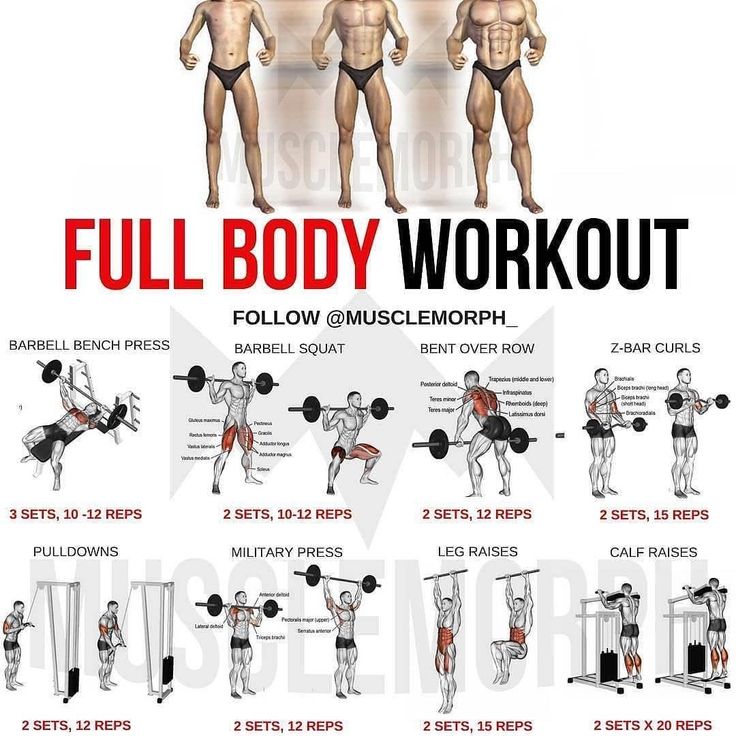
The burpee is a full-body exercise that combines a squat, push-up, and jump, making it a highly effective exercise for building strength, endurance, and cardiovascular fitness.
Want to get the most out of your workout in the shortest amount of time? Five total body exercises can do the trick, but don’t forget about what you fuel your body with! Check out this guide to High Fiber Meals for Weight Loss: A Guide to Feeling Full and Slim to help you stay full and energized for those intense workouts.
With the right nutrition and a killer exercise routine, you’ll be seeing results in no time!
Performing a Burpee Correctly
To perform a burpee correctly, follow these steps:
- Stand with your feet shoulder-width apart.
- Squat down, placing your hands on the floor in front of you.
- Kick your feet back into a push-up position.
- Perform a push-up.
- Return to the push-up position.
- Bring your feet forward to the squat position.
- Jump up explosively, extending your arms overhead.
- Land softly on your feet and repeat.
Benefits of Burpees
Burpees offer numerous benefits for your overall fitness:
- Cardiovascular Fitness:Burpees are a high-intensity exercise that elevates your heart rate and improves cardiovascular health.
- Muscle Building:Burpees engage multiple muscle groups, including your chest, shoulders, triceps, quads, hamstrings, glutes, and core.
- Calorie Burning:Burpees are a highly effective calorie-burning exercise, burning more calories than many other exercises in a shorter amount of time.
Progression of Burpees
You can progress your burpees as you get stronger and more comfortable with the exercise:
- Beginner:Start with a modified burpee by eliminating the push-up. Simply squat down, kick your feet back, and jump back up. This modification allows you to focus on the core movement without the added challenge of the push-up.
- Intermediate:As you get stronger, you can add a push-up to the burpee. This will increase the intensity and challenge your upper body strength.
- Advanced:For an even greater challenge, you can add a jump squat to the end of the burpee. This will further elevate your heart rate and increase your power output.
Workout Routine: 5 Total Body Exercises For More Results In Less Time
This workout routine incorporates all five exercises: push-ups, squats, lunges, planks, and burpees. It’s designed to be efficient and effective, helping you achieve your fitness goals in a shorter amount of time.
Sample Workout Routine
This sample workout routine is a good starting point for beginners. You can adjust it based on your fitness level and goals.
- Warm-up:5 minutes of light cardio, such as jogging in place or jumping jacks.
- Push-ups:3 sets of 10-12 repetitions.
- Squats:3 sets of 10-12 repetitions.
- Lunges:3 sets of 10-12 repetitions per leg.
- Plank:Hold for 30 seconds, repeat 3 times.
- Burpees:3 sets of 10-12 repetitions.
- Cool-down:5 minutes of stretching.
Adjusting the Workout
Adjusting the workout routine based on your fitness level and goals is crucial. Here are some tips:
- Beginners:Start with fewer sets and repetitions, and gradually increase them as you get stronger. You can also modify the exercises, such as doing push-ups against a wall or performing squats with a chair for support.
- Intermediate:Increase the number of sets and repetitions, and try adding more challenging variations to the exercises, such as incline push-ups or weighted squats.
- Advanced:Increase the intensity by adding weights or resistance bands, or by performing the exercises at a faster pace.
Incorporating Rest and Recovery
Rest and recovery are crucial for muscle growth and injury prevention. Here are some tips:
- Rest days:Take at least one to two rest days per week to allow your muscles to recover.
- Active recovery:On rest days, engage in light activities like walking, stretching, or yoga.
- Listen to your body:If you’re feeling sore, take an extra rest day or modify your workout.
Nutrition and Recovery
You’ve put in the effort with your intense workout routine, but it’s not just about the exercise. Proper nutrition and adequate rest are crucial for maximizing your results and ensuring your body can recover effectively. Think of it as fueling your body for optimal performance and allowing it to rebuild and grow stronger.
Fueling Your Body
Proper nutrition plays a vital role in your fitness journey. It provides the energy your body needs to power through your workouts and the building blocks for muscle repair and growth. Here’s how to optimize your nutrition for maximum results:
Before Your Workout
- Carbohydrates:These provide the primary source of energy for your muscles. Choose complex carbs like whole-grain toast, oatmeal, or fruit for sustained energy release.
- Protein:A small amount of protein, such as a protein shake or yogurt, can help with muscle repair and recovery.
- Hydration:Drinking water is essential for maintaining optimal performance. Aim to drink water about 2 hours before your workout.
During Your Workout
- Hydration:Continue to sip water throughout your workout to prevent dehydration.
- Electrolytes:If your workout is intense or prolonged, consider consuming a sports drink to replenish electrolytes lost through sweat.
After Your Workout
- Protein:Consuming protein within 30-60 minutes after your workout is crucial for muscle repair and growth. Good choices include lean meat, fish, eggs, or a protein shake.
- Carbohydrates:Replenish your glycogen stores by consuming complex carbs like brown rice, quinoa, or sweet potatoes.
- Hydration:Drink plenty of water to rehydrate after your workout.
Rest and Recovery
Just as important as what you eat is how much you rest. Sleep is essential for muscle recovery, hormone regulation, and overall health.
- Sleep Duration:Aim for 7-9 hours of quality sleep per night. This allows your body to repair and rebuild muscle tissue, restore energy levels, and promote hormone balance.
- Active Recovery:Incorporate light activities like walking, stretching, or yoga on your rest days. This helps with blood flow, flexibility, and overall recovery.
- Listen to Your Body:Don’t push yourself too hard. If you’re feeling fatigued or sore, take a break and allow your body to recover.
Consistency and Progress
Consistency is the key to unlocking the full potential of your fitness journey. It’s not about achieving perfection in one go, but rather about building a sustainable habit that yields long-term results. Just like a seed needs consistent watering and sunlight to grow into a strong plant, your body needs consistent exercise to adapt and improve.
Tracking Progress and Making Adjustments
Tracking your progress is crucial to stay motivated and make informed adjustments to your workout routine. This allows you to identify areas where you’re excelling and areas that need more attention. There are several ways to track your progress, such as:
- Keeping a workout log:Record the exercises you perform, the weight you lift, the sets and reps you complete, and the time you spend exercising. This provides a detailed overview of your workouts and helps you identify patterns and areas for improvement.
- Measuring your body composition:This can be done using a body fat scale, a tape measure, or by consulting a fitness professional. Tracking changes in body fat percentage, muscle mass, and body circumference can provide valuable insights into your progress.
- Taking progress photos:Taking photos of yourself at regular intervals can be a powerful visual tool for tracking progress. Compare these photos over time to see how your body composition and muscle definition have changed.
Based on your tracked progress, you can make adjustments to your workout routine to ensure continuous improvement.
“Consistency is key. It’s not about perfection, it’s about progress. Every workout, every rep, every healthy meal is a step forward.”
Staying Motivated
Maintaining a consistent exercise regime can be challenging, but there are ways to stay motivated:
- Set realistic goals:Don’t aim for unrealistic goals that can lead to discouragement. Start with small, achievable goals and gradually increase the intensity and duration of your workouts as you progress.
- Find an exercise buddy:Working out with a friend can provide motivation, accountability, and a fun social experience.
- Reward yourself:Celebrate your achievements and reward yourself for staying consistent. This can be anything from enjoying a healthy meal to buying a new workout outfit.
Remember, every workout counts. Even on days when you don’t feel motivated, push yourself to complete at least a short workout. You’ll be surprised at how much even a little effort can contribute to your overall fitness journey.
Last Point
So, there you have it – five total body exercises that pack a punch! By incorporating these movements into your routine, you’ll not only achieve remarkable results but also experience the joy of a fulfilling workout that fits seamlessly into your busy life.
Remember, consistency is key – even a few minutes of dedicated effort each day can make a world of difference. So, lace up your sneakers, grab your water bottle, and get ready to unlock your full potential with these powerful total body exercises.

